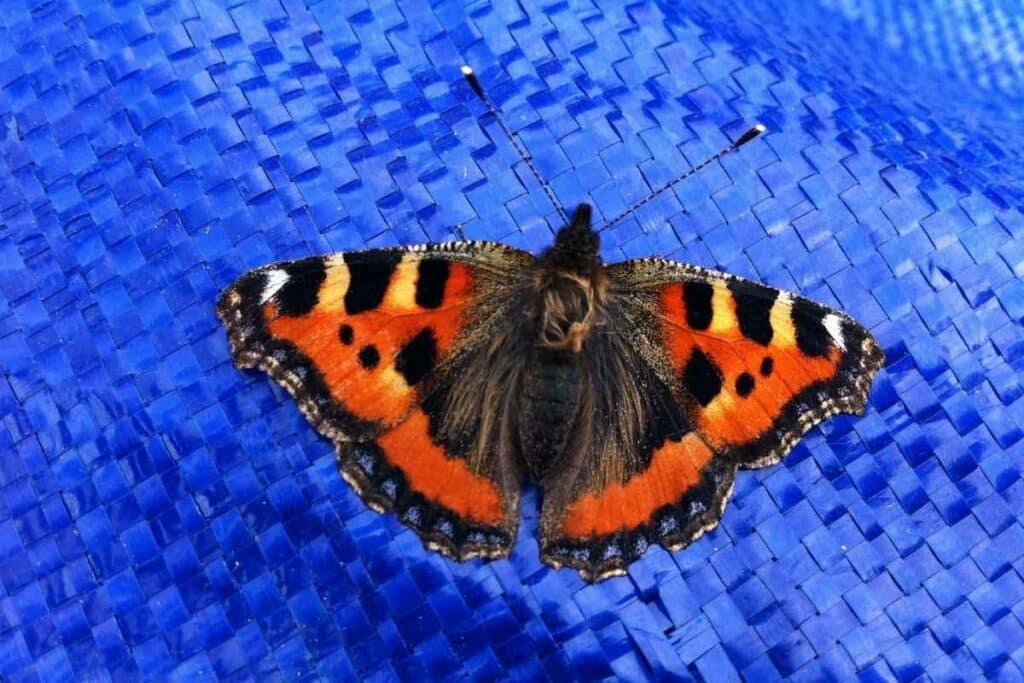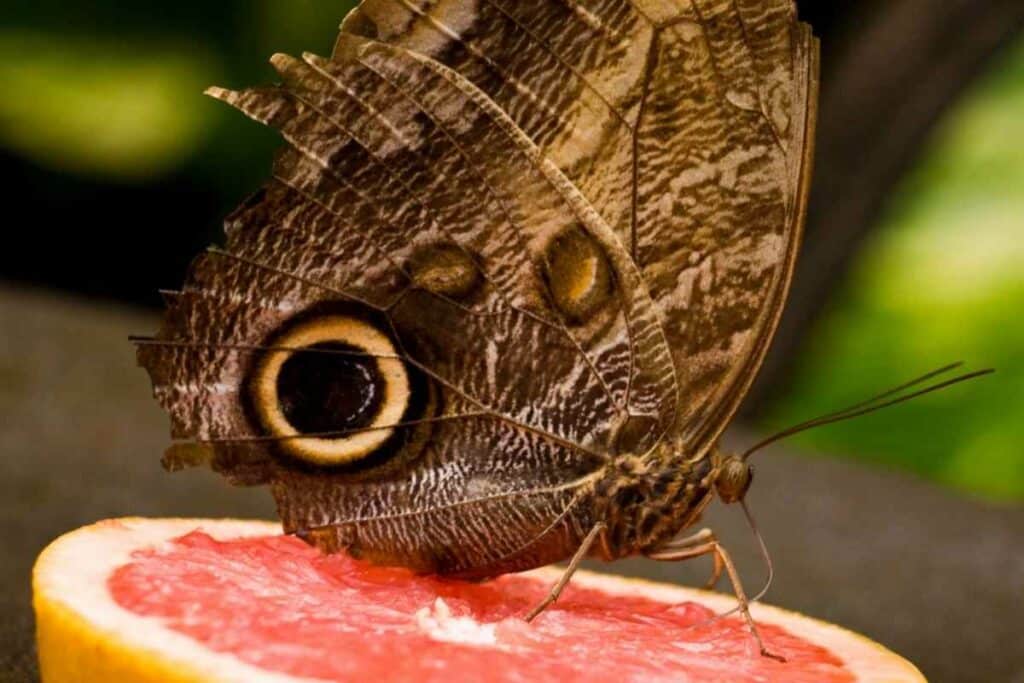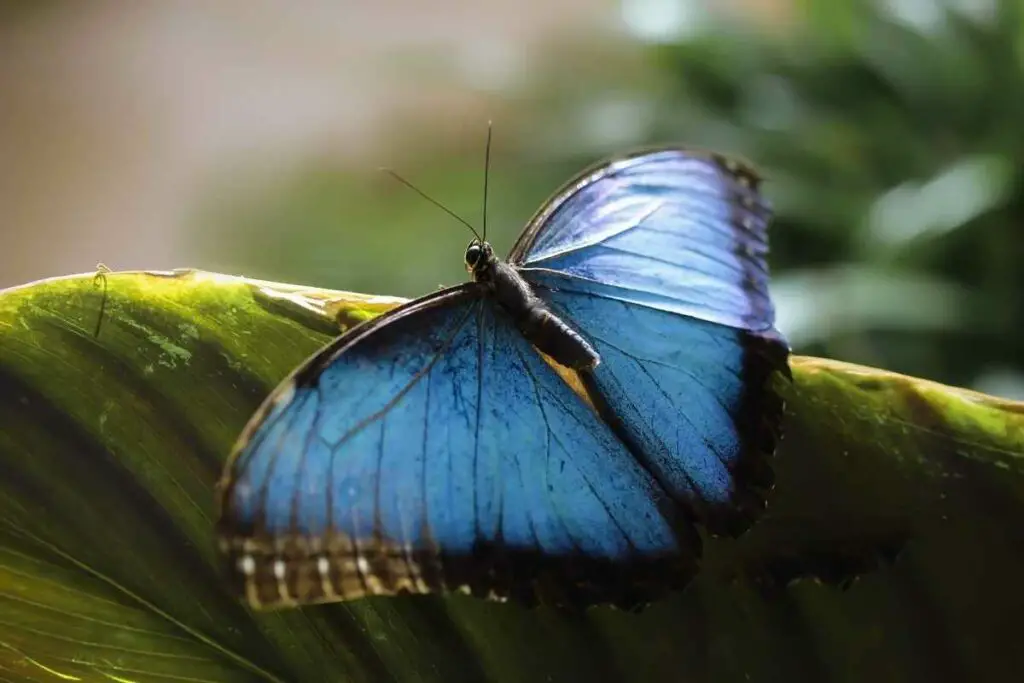Though they subsist on a liquid diet, butterflies do not truly pee or poo. They simply do not have the apparatus needed like kidneys to filter and concentrate urine. However, if they become overfilled with fluid they do have the apparatus to release a fine spray of liquid from their abdomens. This phenomenon has been observed with many species of butterfly and is often associated with active mudpuddling.
Butterflies have fascinating physiology that keeps them at their beautiful best despite flying around for hours in the intense sunlight of summer.
In this article, we will delve into the mysteries of butterfly hydration, including where these insects enjoy stopping off for a drink!
Butterflies Release Water from Their Abdomens During Mudpuddling
If you get the opportunity to observe some butterflies gully bottoming or mudpuddling, you may notice that will release a fine spray, droplets, or bubbles of water from their abdomens as they drink.

This dew is usually released from an anal open in the second terga of the lower abdomen. The jet of liquid can easily be mistaken for peeing and can be observed in many species of butterfly.
Scientists and wildlife photographers have been able to capture this forceful release of fluid, known as abdominal dew, or abdominal sap from the tip of the abdomen as the butterflies guzzle massive amounts of the nutrient and mineral-rich fluids that they crave.
In Some Cases: The fluid release is slower with a move viscous, sap-like liquid forming a droplet at the tip of the abdomen. This “peeing” phenomenon has also been observed in butterflies after active flight and in humid weather.
The Fluid Released by Butterflies Varies Massively in Size and Consistency
When observed closely, the excreted fluids have been found to vary in droplet size.
The size of the liquid droplets ejected by butterflies bears no relation to the size of the butterfly; even small butterfly species can produce large droplets that are disproportionate to their bodies.
The fluid also varies in colour and consistency. It can be clear or muddy and cloudy.
It is thought that the liquids that the butterfly feeds on, the duration of feeding and its digestive processes will determine what the droplets will be like.
Why Are Butterflies Releasing Fluids in This Way?
The science is not settled on why butterflies pass water in this way.
The fluid itself has not been fully analyzed but is not thought to be just pure water.
A number of hypotheses have been proposed by entomologists with an interest in butterflies:
- Humid drops collect on the butterfly abdomen condense and trickle towards the tip
- It is an evolutionary adaptation acquired from aquatic ancestor species
- The fluid release is a homeostatic mechanism
- The butterfly is ejecting excess fluid that could impede flight due to its weight
- They prioritise the absorption of salts and nutrients and get rid of the fluids
Butterflies Simply Do Not Have the Sophisticated Systems for Fluid Balance That Humans Do
But they still have the same need for hydration, often in harsh environments where fluid may not be readily accessible.

Their need for moisture, salts and other nutrients can lead to wild swings in the concentration and composition of body fluids as they drink a variety of fluids.
Butterflies, therefore, have to rely on simple methods of altering their body water composition including:
- ingestion
- osmosis
- diffusion
- evaporation
- excretion
Butterflies Are Reliant on Their Tube-like Digestive System for the Majority of Their Fluid Exchange
The rudimentary digestive system of a butterfly is the location where most of the fluid exchange will take place.
Within its abdomen butterfly has a crop, midgut and hindgut for the absorption of fluids that are sucked up through its long, straw-like proboscis.
Those “pee” Droplets Are a Big Part of How Butterflies Drink
Like over half of the insect species across the globe, butterflies are fluid-feeders.
The tube-like mouthparts provide a long channel for ingested fluids to flow up into the head of the butterfly.
Research undertaken by Kent State University, using X-ray imaging and optical microscopy found that the butterflies are able to take up the fluids by using capillary action, taking advantage of surface tension of the liquid films they look for to feed.
The fluid-feeding of butterflies has four steps:
- Wetting
- Dewetting
- Absorbing
- Pumping
Many butterfly species routinely recycle their excretions.
The wetting process can be applied to dried material like bird droppings with a butterfly arching its abdomen and pushing out a drop of fluid to wet the droppings so that it can feed off the moist material.

This behaviour, which has only recently been characterised, is repeated for the duration of feeding.
The butterfly proboscis and mouthparts of a butterfly are both fibrous and porous. They are adapted to the job of wetting and sucking up liquids.
The physical work done by a butterfly to fluid-feed requires muscular effort to move liquids into its digestive tract.
Rounding Up
This newly discovered excretory behaviour in butterflies is fascinating to behold and it is a sign of a butterfly being able to take a hearty draught in safety for a prolonged period.
The appearance of these water droplets is strongly associated with mud puddling.
Have you heard of this feeding behaviour in butterflies? It’s not for the squeamish as it involves butterflies banqueting on blood, dung and even corpses.
Want to learn more? Why not read the article “Do Butterflies Drink Blood?”
You Might Wonder Why
- Do Snails Have Eyes or Are They Blind?
- Do Caterpillars Have Legs?
- Do Centipedes Have 100 Legs? Why Do They Have so Many Legs?